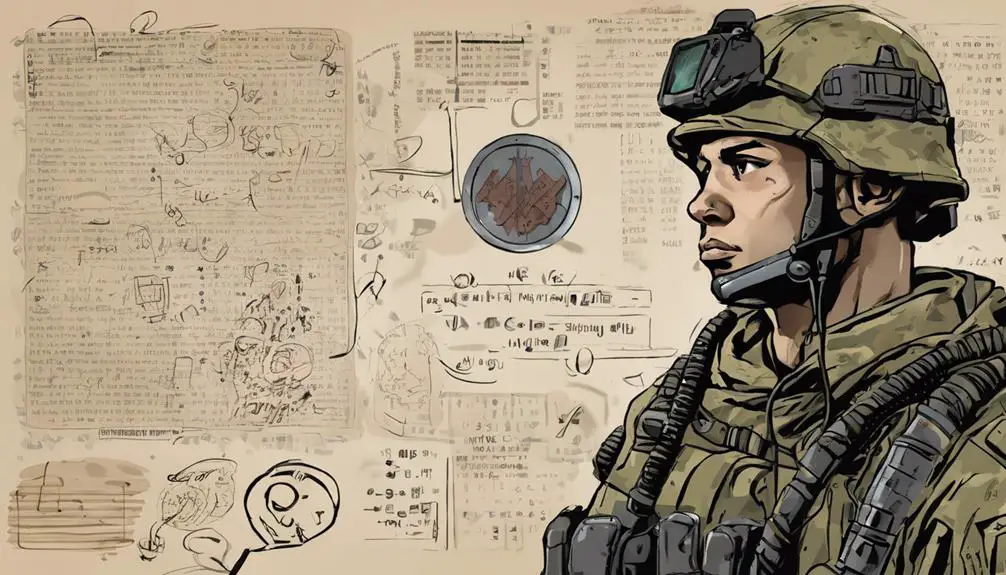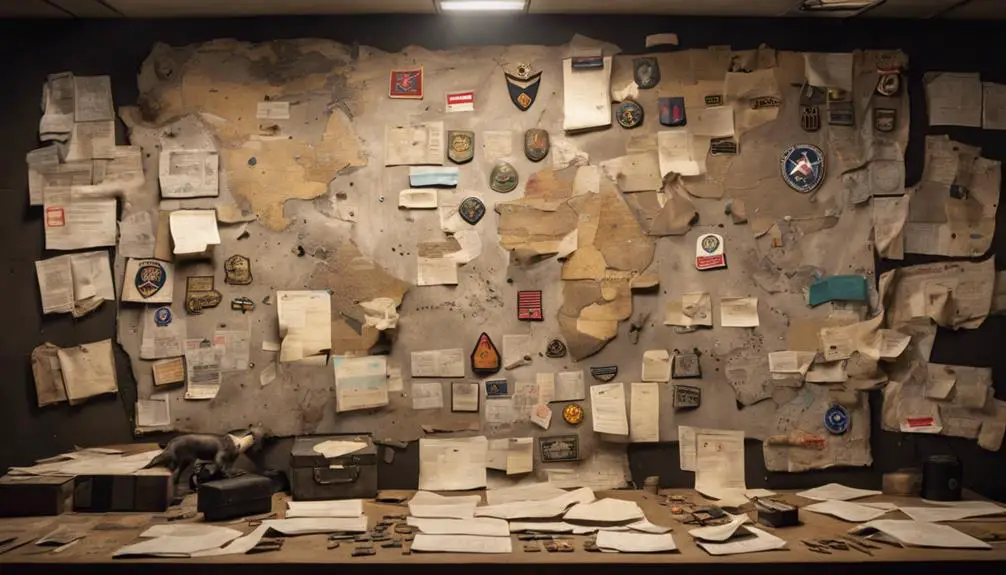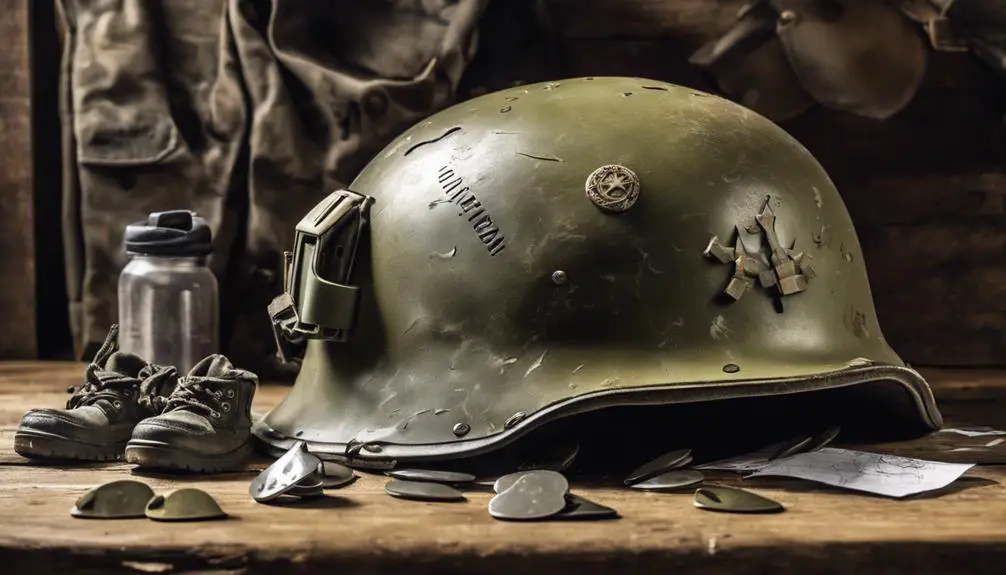You're about to enter a world where "Hooah" and "Oorah" are everyday phrases. Military slang and acronyms are essential for effective communication and camaraderie. You'll need to know what "ROE" and "TIC" mean in combat zones, and how to decipher cryptic messages quickly. Mastering military slang and acronyms like "SITREP" and "CAS" will make you a valuable asset to your unit. As you navigate tactical operations, you'll encounter abbreviations like "COA" and "C2" that will help you make informed decisions. From special forces to everyday life, get ready to learn a new language.
Military Slang 101: The Basics

When you're new to the military, understanding the language is essential, and it starts with grasping the basics of military slang. You'll quickly learn that military etiquette isn't just about saluting and saying 'yes, sir.' It's about respecting your superiors, following protocol, and communicating effectively.
Boot camp lingo is a unique dialect that's used to convey orders, instructions, and even emotions. You'll hear terms like 'Hooah' (meaning 'yes' or 'agreed'), 'Oorah' (a Marine Corps battle cry), and 'Roger that' (meaning 'I understand').
Mastering military slang is critical for building camaraderie with your fellow soldiers and understanding commands from your superiors. It's also essential for maintaining military etiquette, which is deeply rooted in respect, discipline, and tradition.
Common Acronyms Used in Combat
As you prepare for combat, you'll encounter a range of acronyms that convey critical information quickly and efficiently. In combat zones, every second counts, and these acronyms help you stay focused on the mission. Let's break down some common acronyms you'll use in combat.
You'll often hear 'ROE' (Rules of Engagement), which outline the circumstances under which you can engage the enemy. 'TIC' (Tactical Infiltration Course) is another key term, referring to a training program that teaches you how to navigate hostile terrain.
In combat, you'll need to understand 'Tactical Codes' like 'SITREP' (Situation Report), which provides an update on the battlefield. 'CAS' (Close Air Support) is another essential term, referring to air support during a mission.
When operating in combat zones, you might hear 'EOD' (Explosive Ordnance Disposal), which refers to the safe disposal of explosive devices. 'MEDCAP' (Medical Civic Action Program) is another important term, describing medical aid provided to local civilians.
These acronyms are essential to effective communication in combat. By understanding these terms, you'll be better equipped to stay focused, adapt to changing situations, and complete your mission successfully.
Decoding Military Communication Terms

You'll frequently encounter cryptic communication terms that can make or break the success of your mission, and being able to decipher them quickly is crucial in high-pressure combat situations. As a military professional, understanding the language and protocols used in radio communication is key.
Familiarizing yourself with radio protocol will help you quickly grasp critical information, such as coordinates, enemy positions, and mission objectives. To decode military communication terms, you'll need to employ codebreaking techniques, such as recognizing patterns, identifying abbreviations, and analyzing context clues.
Developing your skills in codebreaking will enable you to rapidly decode messages, ensuring your team stays one step ahead of the enemy. By mastering these skills, you'll become a valuable asset to your unit, able to swiftly interpret and respond to critical information.
Stay alert, stay focused, and stay one step ahead – the success of your mission depends on it.
Tactical Operations and Abbreviations
Frequently, tactical operations rely on a shared understanding of abbreviations to facilitate swift communication and decisive action. As you immerse yourself in the world of military acronyms, you'll encounter terms that are essential for successful tactical operations. Let's break down some vital abbreviations used in tactical insertions and covert operations.
| Abbreviation | Meaning |
|---|---|
| CAS | Close Air Support |
| COA | Course of Action |
| C2 | Command and Control |
| JSOA | Joint Special Operations Area |
| OPLAN | Operation Plan |
In tactical operations, every second counts. Understanding these abbreviations enables you to respond quickly and make informed decisions. For instance, when you hear 'CAS,' you know it's time to call in air support. Similarly, 'COA' indicates a plan of action is being discussed. Familiarize yourself with these terms to stay ahead in the world of tactical operations. By mastering these abbreviations, you'll be better equipped to navigate complex operations and make a difference in high-pressure situations.
Special Forces and Intelligence Terms

Your understanding of tactical operations abbreviations sets the stage for exploring the specialized language used by special forces and intelligence agencies. As you explore the world of special forces and intelligence, you'll encounter terms that are unique to these elite units.
COIN Operations, for instance, refer to Counter-Insurgency Operations, which involve military strategies to counter rebel or insurgent groups. You'll also come across HUMINT Sources, which stands for Human Intelligence Sources, referring to information gathered from human sources such as spies, informants, or interviews.
In the domain of special forces, you'll encounter terms like ODA, which stands for Operational Detachment Alpha, referring to a team of special forces operatives. You might also stumble upon terms like DEVGRU, which refers to the US Navy's Special Warfare Development Group, an elite unit that conducts high-risk missions.
As you navigate the language of special forces and intelligence agencies, you'll gain a deeper understanding of the complex operations and strategies employed by these elite units. By familiarizing yourself with these terms, you'll be better equipped to understand the intricacies of modern warfare and covert operations.
Military Jargon in Everyday Life
Military jargon has permeated everyday language, with phrases like 'boots on the ground' and 'sitrep' (situation report) being used in business and casual conversations. You may have caught yourself using military-inspired phrases without even realizing it. This phenomenon is a reflection of the significant cultural impact of military jargon on civilian life.
Here are three ways military jargon has influenced everyday language:
- Mission-oriented language: Phrases like 'mission critical' and 'objective-based' have become common in business and personal goal-setting.
- Tactical terminology: Words like 'flank' (to bypass or outmaneuver) and 'recon' (reconnaissance) are used in sports, politics, and even social media.
- Acronyms and abbreviations: Military-inspired abbreviations like 'SITREP' (situation report) and 'ETA' (estimated time of arrival) have become part of mainstream vocabulary.
The widespread adoption of military jargon in civilian life highlights the significant cultural impact of military language. As you continue to use these phrases, remember the rich history and context behind them.
Frequently Asked Questions
What Is the Origin of the Term "Hooah" in the US Army?
You're curious about the origin of 'Hooah' in the US Army.
This battle cry is deeply rooted in Army tradition, reflecting the Warrior Culture and Esprit De Corps that defines military heritage.
It's a term of motivation, used to express enthusiasm, approval, or solidarity.
With its unclear origins, 'Hooah' has become an integral part of Army lingo, symbolizing the camaraderie and unity that fuels soldiers in the face of adversity.
Are Military Acronyms Used Differently in Other Countries?
As you explore military communication, you'll find that acronyms are used globally, but with cultural twists. International variations emerge due to language barriers and cultural implications.
For instance, the British Army uses 'milSpeak' to convey complex ideas quickly, while the Australian Defence Force adopts American-style abbreviations.
You'll notice that each country adapts acronyms to their linguistic and operational needs, reflecting local nuances in their military communication.
Can Civilians Use Military Slang in Formal Writing?
When writing in a formal tone, you'll want to avoid using military slang, even if you're familiar with it. It's important to think about your audience and potential language barriers.
Using military slang can create confusion and alienate readers who aren't familiar with the terminology. Instead, opt for clear and concise language that effectively communicates your message to a broader audience.
This guarantees your writing is accessible and understood by everyone, regardless of their background or experience.
Is Military Slang Limited to Enlisted Personnel Only?
Did you know that the US military has over 1.3 million active-duty personnel?
Now, about your question: is military slang limited to enlisted personnel only? Not quite. While it's true that enlisted personnel often use slang more frequently, officers aren't exempt. In fact, many officers, especially those in combat arms, use slang to connect with their troops.
However, some ranks, like high-ranking officers, may not use slang as frequently due to their leadership roles.
Are There Any Military Slang Terms Specific to Certain Wars?
You might be surprised to learn that military slang terms vary by war and region. In Vietnam, for instance, you'd hear phrases like 'grunt' for infantrymen or 'R&R' for rest and relaxation.
Meanwhile, during the Gulf War, soldiers used terms like 'sandstorm' to describe a chaotic situation. These unique dialects, like Vietnam Vernacular and the Gulf Glossary, reflect the distinct experiences and cultural nuances of each conflict.
Conclusion
Mastering military acronyms and slang is a mission accomplished! You've cracked the code, decoded the dialect, and deciphered the docket.
From combat to tactical ops, special forces to intel terms, you're now fluent in the language of the armed forces.
As you navigate everyday life, remember to sprinkle in some military jargon to spice up your speech. Your newfound lingo will leave friends and foes alike in awe of your razor-sharp rhetoric.







